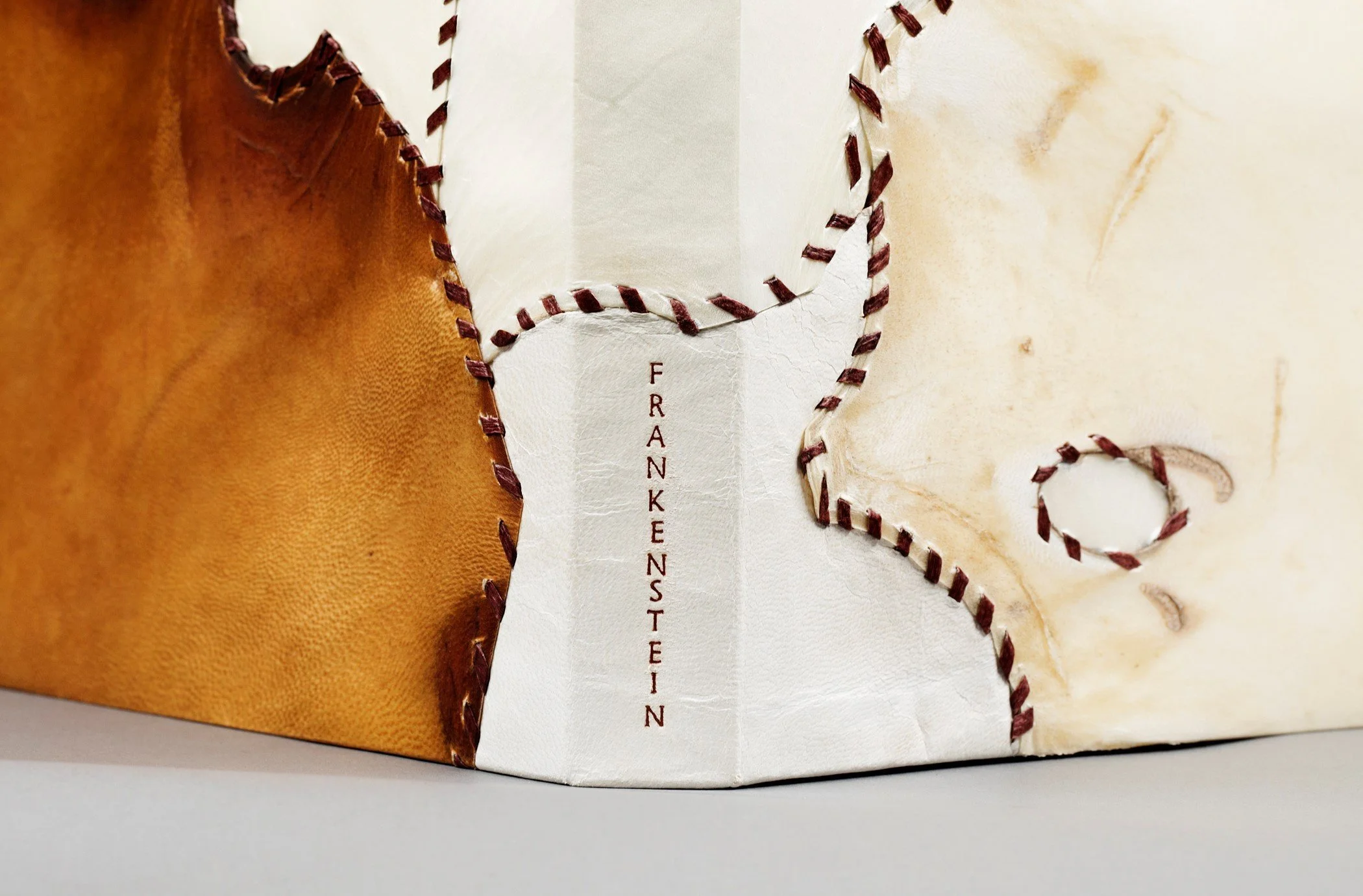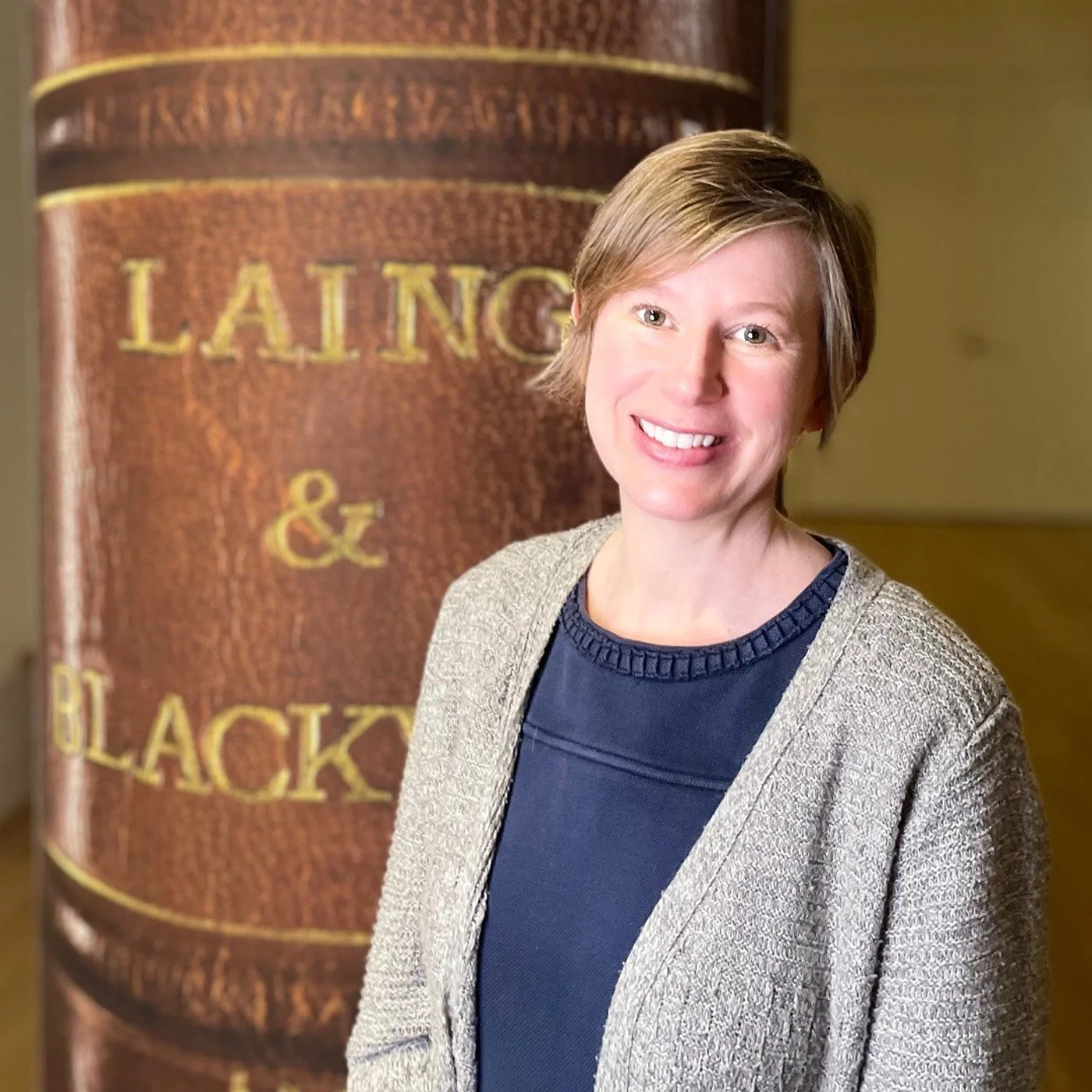The Book Becomes the Cover
Frankenstein, or the Modern Prometheus, by Mary Wollstonecraft Shelly, with woodcut illustrations by Lynd Ward. Lakewood, CO: Centipede Press, 2006
Bound by the artist Karen Hanmer, 2018
By Clare Austen-Smith
Walking into the Hanna Holborn Gray Special Collections Research Center's current exhibition, "A Book by its Cover: Decorative Book Bindings from the Medieval Codex to Contemporary Artists' Books,'' quickly dispels the notion that a book should not be judged by its cover. Viewers are greeted by books bound with precious metal, parchment manuscripts, or decorated with detailed illustrations.
Elizabeth Frengel, Curator
Curated by Elizabeth Frengel, the UChicago Library's Curator of Rare Books, the exhibition shows how book bindings evolved from a necessity to a site of artistic innovation, contextualizing bookbinding styles, artistic movements, and historical importance along the way—and overall, how books’ covers can be read as integral to the narrative texts they envelop.
"I hope with this exhibition that I will get people to think about "why does it make it worthwhile to study the text in the context of its materiality?" says Frengel. "I do think you can certainly make many observations and say something more than what is just the text taken in the abstract."
Frengel has been the Library's Curator of Rare Books since 2018, acquiring new texts for the library, developing specific collections pertinent to faculty and graduate research, and managing gifts of rare books from donors. She also helps challenge commonly held myths about the printed page. "Whenever I'm meeting students for the first time, we're kind of interested in dispelling the idea that Gutenberg invented printing," says Frengel. "People were printing long before Johannes Gutenberg came along." While her title sounds like a job Indiana Jones might be tempted to apply for, Frengel's position takes her traveling through time, rather than ancient pyramids. By examining the book bindings of age-old texts, Frengel is able to decipher clues that reveal the history of the book itself; like who owned it or how it was made.
“The relationship between book and binding enhances not just the reading experience, but our historical understanding of the book itself.”
However, this did not make it any easier to narrow down the selection of books she wanted to include in the exhibition. "The University of Chicago Library has a really outstanding, truly world class collection of rare books, manuscripts, and archival materials. It was hard to know when to stop!" What made sifting through the collection feasible was the Library's relatively recent pivot to including details about bindings in catalog descriptions. "For about the past 10 or 15 years, we've taken extraordinary effort to record the physical attributes of our materials and what makes our copy unique? What is its provenance? Where did it come from? How did it get here?" Frengel says. Including these details in the library record helps give weight to the importance of the books' context and presenting these books through the lens of their covers also allows these contextual details to shine. says Frengel. "Students who are doing their master's thesis or their doctoral research, they're often using Early English Books Online, and they're seeing only digital representation. Part of the motivation for this exhibition was to highlight the context of the texts themselves and demonstrate how the relationship between book and binding enhances not just the reading experience, but our historical understanding of the book itself."
Take, for example, the Antiphonary on view in the show, a massive song book bound in hardwood boards for use in a medieval monastery. Scrolling through pages of text via microfilm might share what songs the monks at the time were singing in the monastery, but you would never know that the book itself was larger than the average person's arm span, with massive hardwood panels covered in tooled leather as the binding. It can’t be lifted by one person. The cover is also augmented by huge brass bosses. "Based on the weight of the book, monks would store it horizontally to preserve the binding, which you can tell by the sheer size and weight of it." These binding elements share how the monks lived and worked with the antiphonary.
Lectures by William Morris, 1896. Bound by Florence Paget. The Hanna Holborn Gray Special Collections Research Center, The University of Chicago Library. Full polished calf with gold tooled flowers, hearts and tendrils on both covers; title in gilt on spine, with a single heart and tendril below; gilt dentelles.
More contemporary historical movements can also be investigated through examining the bindings made during this time. Bookbinding provided an avenue for female artisans to excel at a time when women were still shunned from the mainstream economic arts. "Binding also requires a lot of sewing, so in a sense, women would gravitate to this work during this time period." Works created by the Guild of Women Binders, an artisans’ collective composed entirely of women, created sought after bindings. They used high quality materials, such as morocco. Every binding was fashioned with great care. Influenced by the Arts and Crafts movement, the Guild made a strong aesthetic contribution to book binding that is still seen today.
The tradition of book binding building to the understanding of the text has been fully realized in contemporary time. Bookbinder Karen Hanmer's binding dramatically culminates the exhibition with a striking cover of Mary Shelley's Frankenstein. Long stitches of thread sew pieces of parchment, vellum, and deer hide together like patchwork, mimicking Shelly's striking descriptions of Frankenstein’s creature. In this, Frengel says, "the book becomes the cover. The bindings are not just corresponding to the text but add this whole layer of meaning. If it didn't have that binding, it would be something altogether different."
Judging a book by its cover, it seems, is actually a pretty good idea.
Coming Up: ‘A Book by Its Cover’ webinar with curator Elizabeth Frengel
Wednesday, March 23, 2022, 12-1 pm CST
Registration: qrco.de/bookbyitscover



